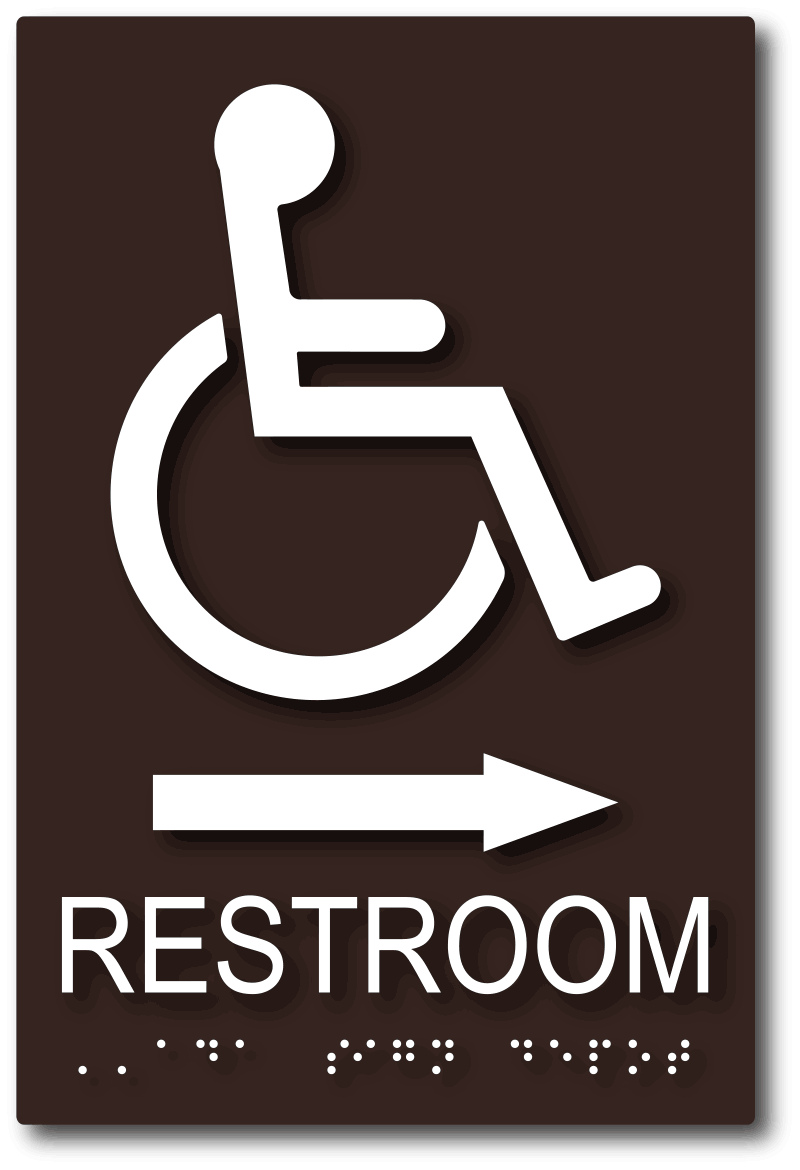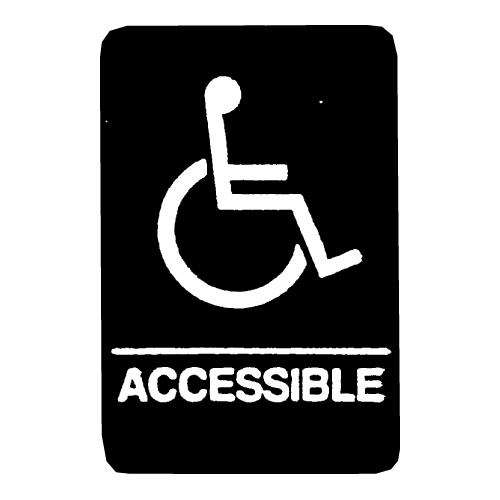Understanding the Regulations Behind ADA Signs
Understanding the Regulations Behind ADA Signs
Blog Article
Discovering the Secret Attributes of ADA Signs for Improved Ease Of Access
In the world of accessibility, ADA indications offer as quiet yet powerful allies, ensuring that areas are navigable and comprehensive for individuals with disabilities. By incorporating Braille and tactile components, these indications damage barriers for the visually damaged, while high-contrast shade plans and understandable font styles provide to varied aesthetic demands.
Relevance of ADA Conformity
Ensuring conformity with the Americans with Disabilities Act (ADA) is crucial for promoting inclusivity and equal access in public rooms and work environments. The ADA, established in 1990, mandates that all public facilities, companies, and transport services suit individuals with handicaps, guaranteeing they delight in the same legal rights and possibilities as others. Compliance with ADA standards not just satisfies legal commitments however additionally boosts an organization's track record by showing its commitment to diversity and inclusivity.
Among the vital elements of ADA conformity is the application of easily accessible signage. ADA indicators are created to make sure that people with impairments can quickly browse via buildings and rooms. These indications must stick to specific guidelines pertaining to size, font style, shade contrast, and positioning to guarantee presence and readability for all. Properly executed ADA signs aids eliminate obstacles that people with specials needs often experience, consequently promoting their freedom and confidence (ADA Signs).
Furthermore, adhering to ADA guidelines can minimize the threat of potential fines and legal consequences. Organizations that stop working to abide by ADA standards may encounter suits or penalties, which can be both economically difficult and destructive to their public picture. Thus, ADA conformity is important to cultivating a fair atmosphere for everyone.
Braille and Tactile Components
The incorporation of Braille and responsive elements into ADA signage personifies the concepts of access and inclusivity. These attributes are important for people that are aesthetically damaged or blind, enabling them to browse public rooms with higher independence and self-confidence. Braille, a tactile writing system, is important in providing written information in a layout that can be easily regarded via touch. It is normally placed beneath the corresponding text on signage to guarantee that people can access the information without visual support.
Tactile components expand beyond Braille and consist of raised characters and icons. These elements are made to be noticeable by touch, enabling people to recognize area numbers, toilets, departures, and other vital areas. The ADA establishes details guidelines relating to the dimension, spacing, and positioning of these responsive elements to maximize readability and ensure uniformity throughout various environments.

High-Contrast Color Pattern
High-contrast color systems play an essential duty in boosting the exposure and readability of ADA signage for individuals with visual impairments. These plans are essential as they optimize the distinction in light reflectance in between message and history, making sure that signs are quickly discernible, even from a range. The Americans with Disabilities Act (ADA) mandates making use of details color contrasts to accommodate those with minimal vision, making it a vital facet of conformity.
The efficacy of high-contrast colors lies in their capacity to stick out in various lights problems, including dimly lit atmospheres and areas with glare. Typically, dark message on a light history or light message on a dark background is used to accomplish optimum contrast. Black text on a white or yellow background provides a raw visual distinction that helps in quick recognition and comprehension.

Legible Fonts and Text Dimension
When considering the layout of ADA signs, the option of clear fonts and appropriate message dimension can not be overstated. The Americans with Disabilities Act (ADA) mandates that fonts must be sans-serif and not italic, oblique, manuscript, extremely decorative, or of unusual kind.
The dimension of the text additionally plays a crucial function in ease of access. According to ADA guidelines, the minimal text elevation need to be 5/8 inch, and it must enhance proportionally with viewing range. This is particularly important in public rooms where signage requirements to be read promptly and precisely. Uniformity in text size adds to a cohesive aesthetic experience, aiding people in navigating settings effectively.
Additionally, spacing between lines and letters is essential to readability. Sufficient spacing protects against characters from showing up crowded, enhancing readability. By sticking to these criteria, designers can dramatically improve access, guaranteeing that signs offers its intended function for all people, regardless of their aesthetic capabilities.
Efficient Positioning Strategies
Strategic placement of ADA signs is essential for making best use of ease of access and making sure conformity with legal criteria. Effectively located signs assist individuals with specials needs successfully, promoting navigating in public spaces. Key considerations consist of height, visibility, and proximity. ADA guidelines state that indications must be installed at an elevation between 48 to 60 inches from the ground to ensure they are within the line of sight for both standing and seated individuals. This conventional height variety is important for inclusivity, making it possible for mobility device individuals and individuals of varying heights to access information easily.
In addition, indications must be placed adjacent to the lock side of doors to permit easy recognition before entry. Uniformity in indicator positioning throughout a center enhances predictability, decreasing complication and enhancing total individual experience.

Conclusion
ADA indications play an essential role in advertising accessibility by integrating functions that resolve the needs of individuals about his with handicaps. Incorporating Braille and tactile aspects makes certain crucial info is accessible to the visually impaired, while high-contrast color design and understandable sans-serif fonts enhance exposure throughout numerous lights conditions. Effective placement methods, such as ideal mounting heights and tactical places, additionally assist in navigating. These components jointly promote an inclusive environment, highlighting the significance of ADA compliance in making sure equal gain access to for all.
In the world of ease of access, ADA indicators offer as silent yet effective allies, ensuring that rooms are comprehensive and navigable for individuals with disabilities. The ADA, passed in 1990, mandates that all public facilities, employers, and transport solutions read here accommodate people with specials needs, ensuring they enjoy the very same civil liberties and chances as others. ADA Signs. ADA signs are designed to make sure that individuals with handicaps can quickly navigate via rooms and buildings. ADA standards state that indicators must be mounted at an click for source elevation between 48 to 60 inches from the ground to guarantee they are within the line of sight for both standing and seated people.ADA signs play an essential function in advertising ease of access by incorporating functions that address the requirements of people with impairments
Report this page